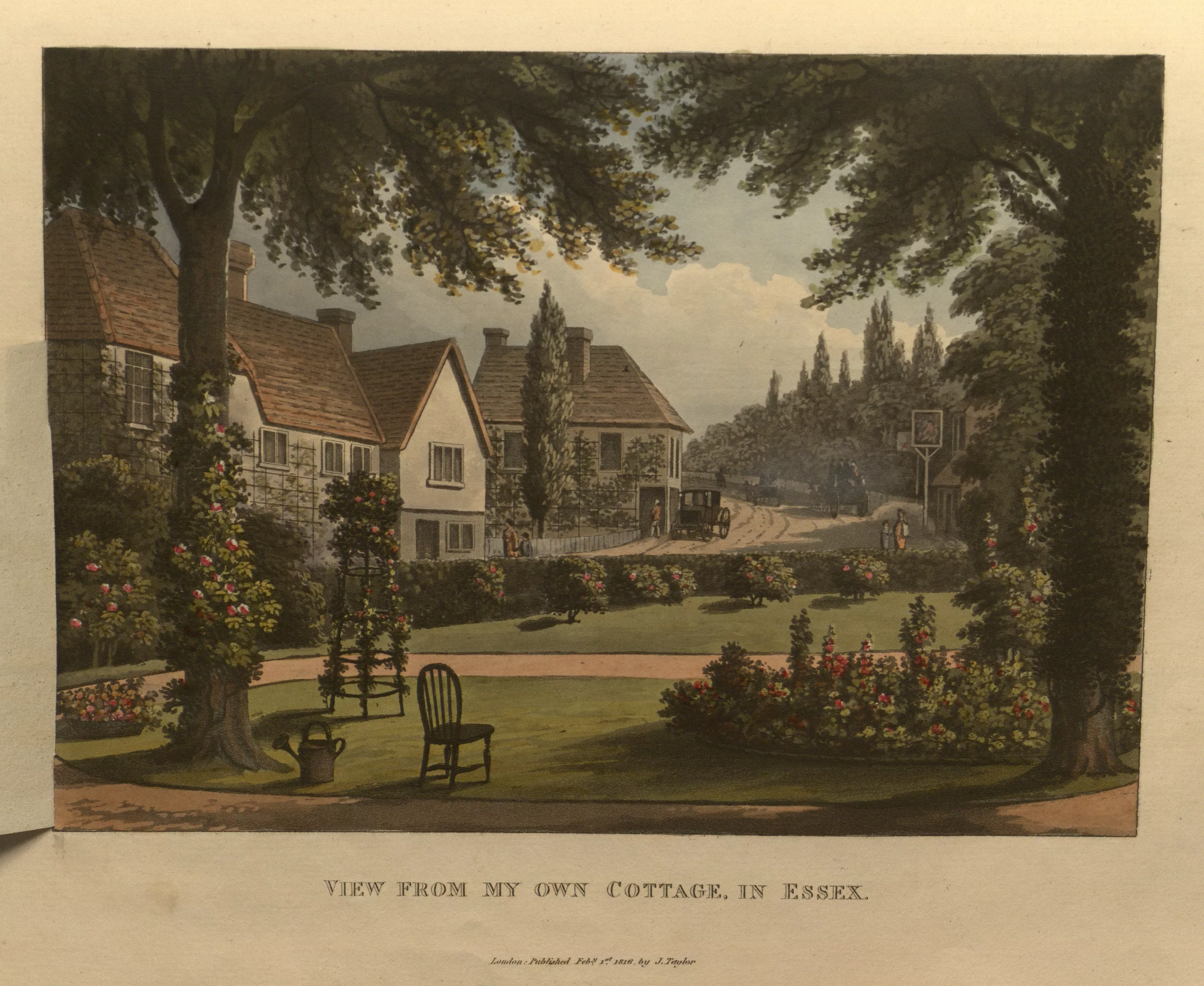Exhibit
Creation Date
1 February 1816
Height
17 cm
Width
24 cm
Medium
Genre
Description
Repton's lavishly illustrated texts served to record past accomplishments as wells as to advertise his skills as a landscape architect. The over-slips that allow for "before" and "after" views of a property were particularly important as they testified to the dramatic results Repton promised.
Repton's "improvements" of landscapes often include the eradication of unwanted vagabonds or loitering persons. The "before" and "after" design of his over-slip illustrations justify the enclosure of common land and the removal of unwanted persons on aesthetic grounds. Furthermore, these aquatints suggest that one of the roles of the artist is to eliminate unwanted wanders in the name of beautification.
This image presents the same view as the first in the gallery, with some alterations (the over-slip attached to the illustration constituted by these two images has been lifted). We still have a view of a fork in the road, but the signs and pedestrians are now mostly concealed by a new hedge. The same two trees still frame the foreground, but the trunk of the tree on the left is now covered in flowering vines; the lattice fence, ducks, and disabled man have been replaced by a trellis, a flower garden, and some rose bushes. A chair and watering can occupy the foreground, and an additional trellis and shrubbery hide the view of the butcher’s shop.
Repton begins his commentary on the purposed improvement of his own property with the observation that during his long and active life, his efforts “have contributed to the happiness of some hundred individuals, and the employment of some thousands” (Repton 232). Yet, when faced with the unpleasant sight of a person likely in need of employment, he quickly eradicates the wandering “eye soar” from his vista. Notably, the man in question suffers from multiple injuries, and lacking the better portion of two limbs, would probably be unsuited to the landscaping work Repton’s projects provide. The violence of the old man’s erasure from Repton’s property is underscored by the empty chair with which he is replaced. This seat, which could provide the weary old traveler with needed respite, appears only after he is pointedly excluded from the landscape. Landscape designers such as Repton were able to control and reshape many aspects of their natural environment. However, it proved much harder to control the human element of a given landscape. Large tracks of private property could lessen the problem, but the unwanted sight of beggars, vagrants, or gypsies at the fringes of a property could never be fully avoided.
From 1814 until his sudden death in 1818, Humphry Repton retired to his Hare Street home, dedicating himself to his final treatise and memoir, Fragments on the Theory and Practice of Landscape Gardening (Daniels). Focusing on smaller projects, such as flower gardens, the volume ends with a view from Repton’s own window.
Collection
Accession Number
Thordarson T 4078
Additional Information
Bibliography
Daniels, Stephen. “Repton, Humphry (1752–1818).” Oxford Dictionary of National Biography. Ed. H. C. G. Matthew and Brian Harrison. Oxford: OUP, 2004. Web. 12 Mar. 2009.
Humphrey, Repton. Fragments on the Theory and Practice of Landscape Gardening. London: J. Taylor, 1816. Print.

